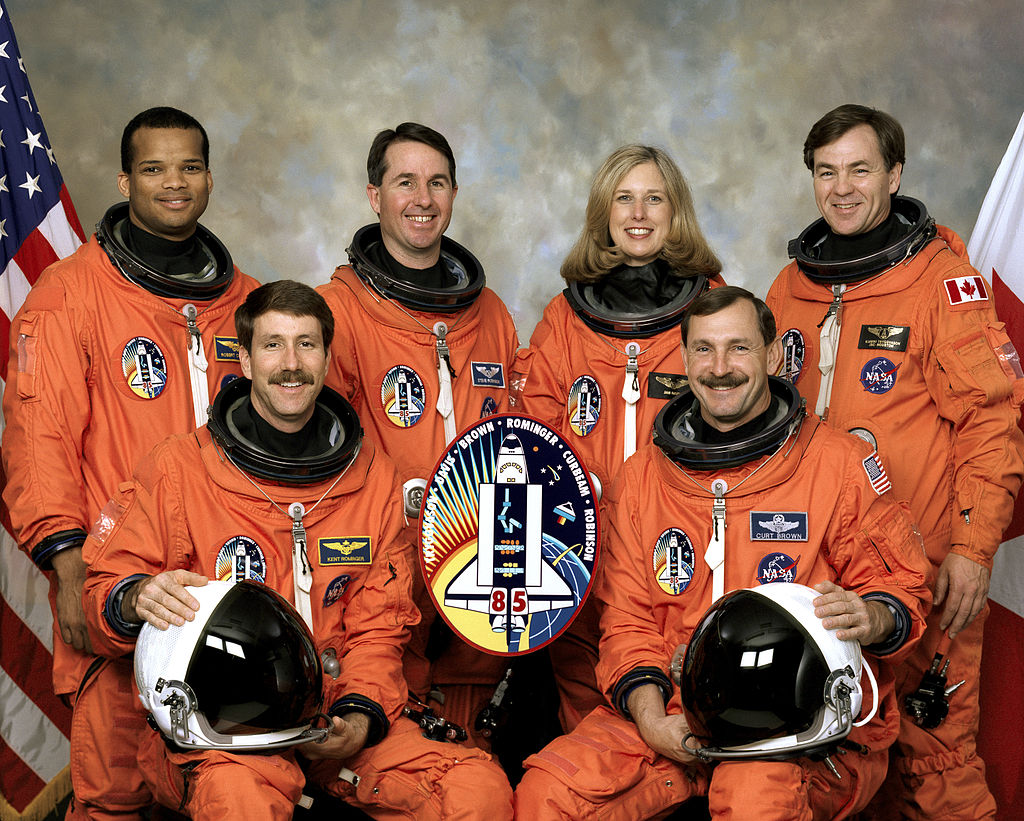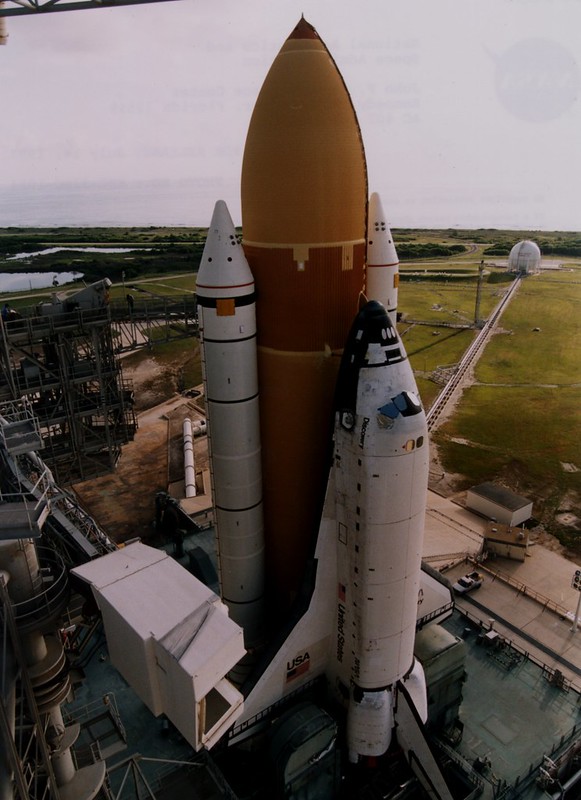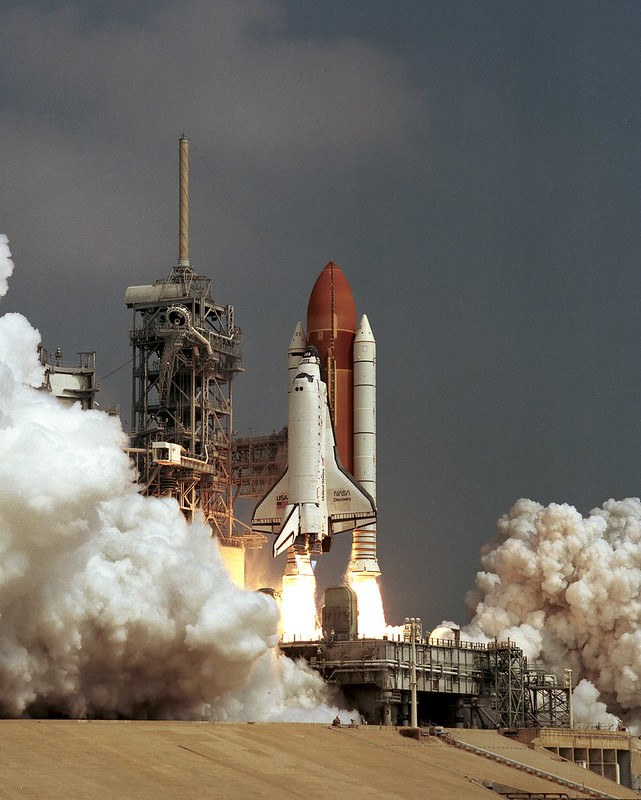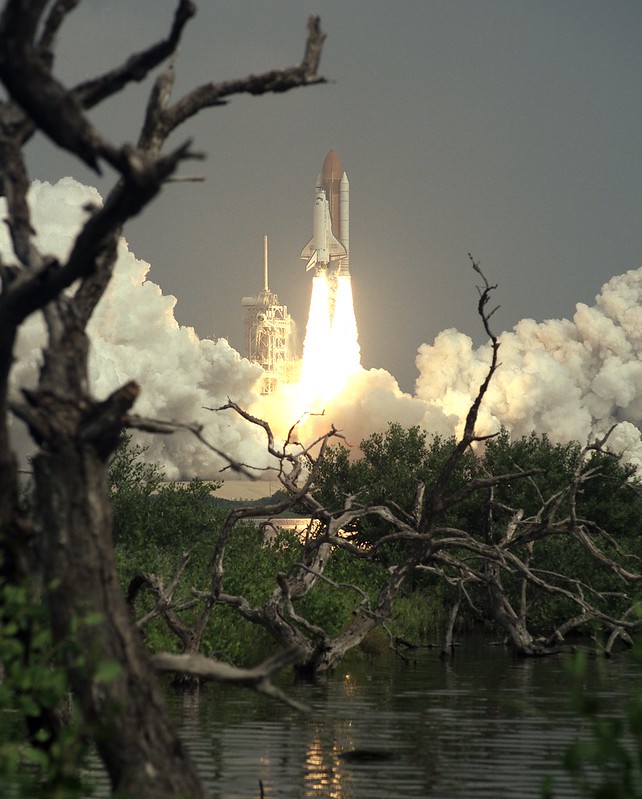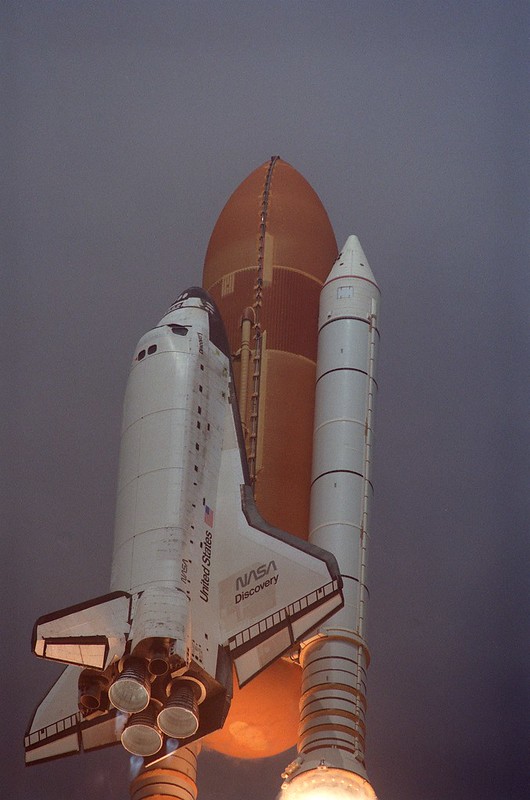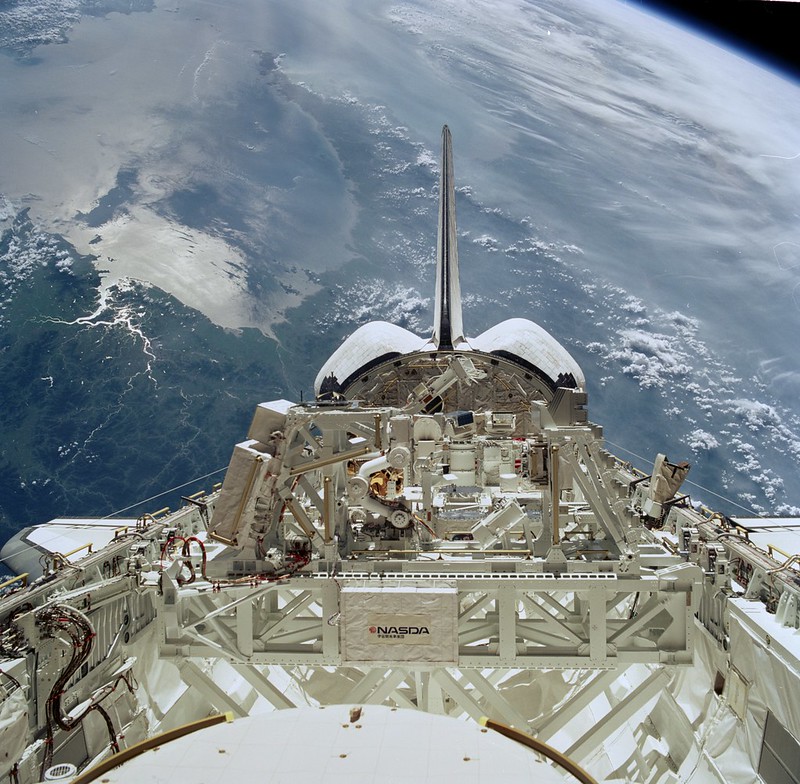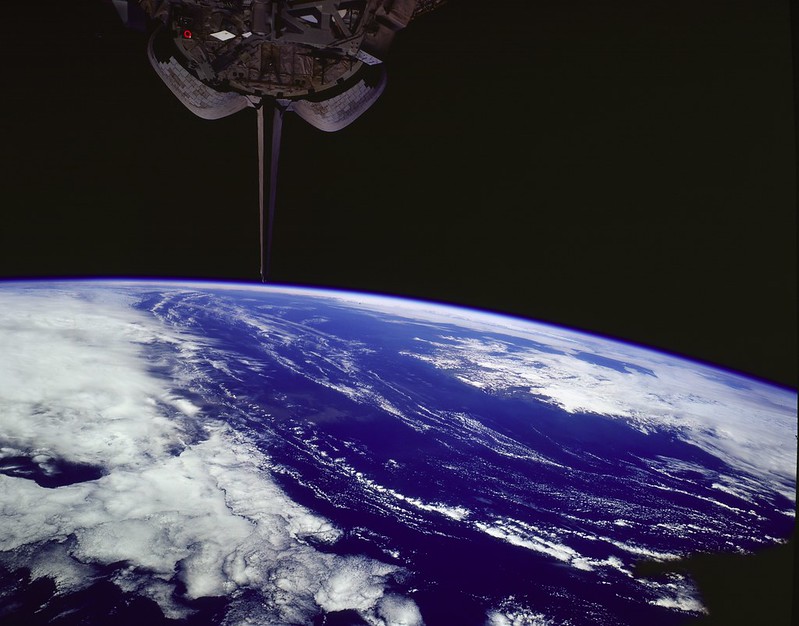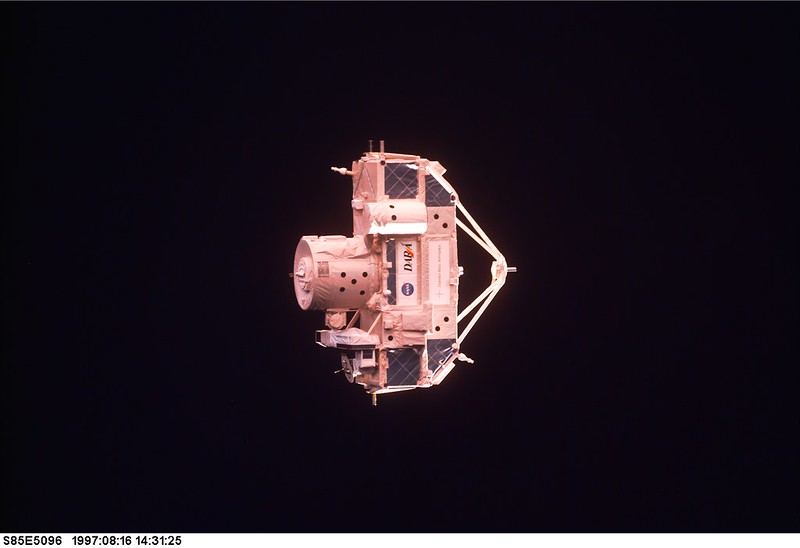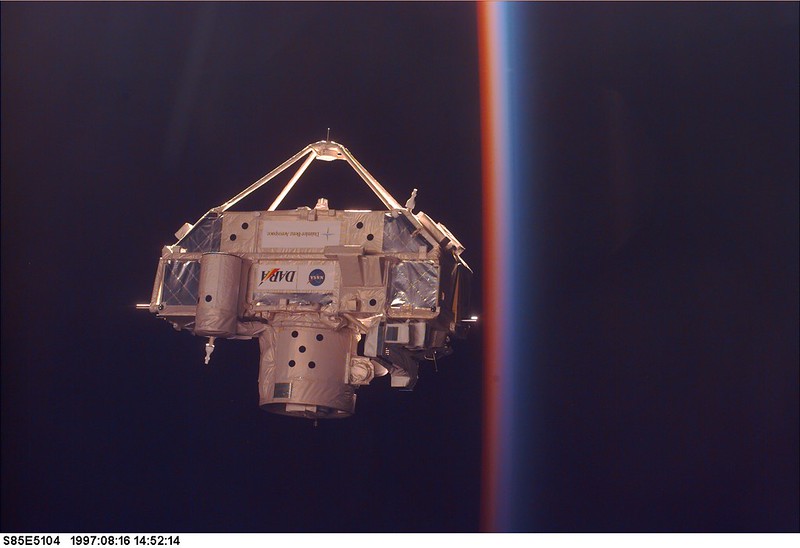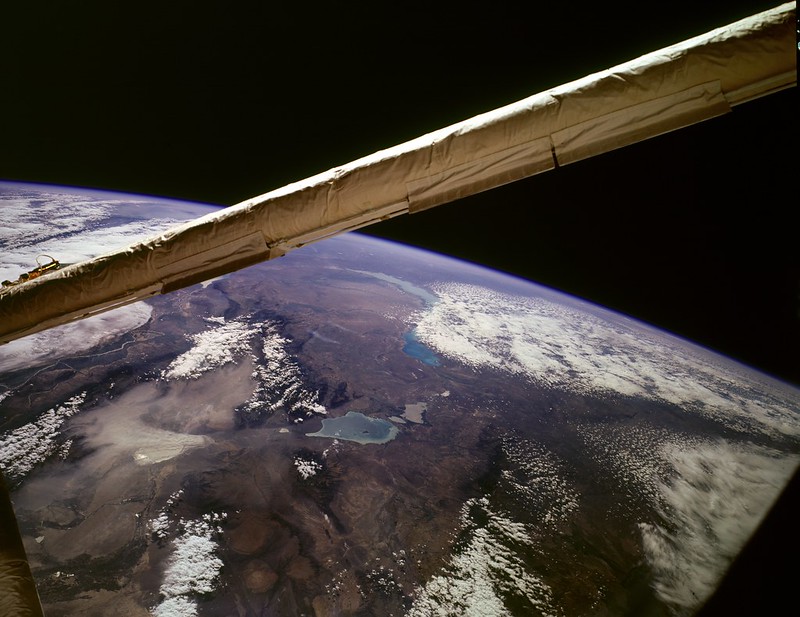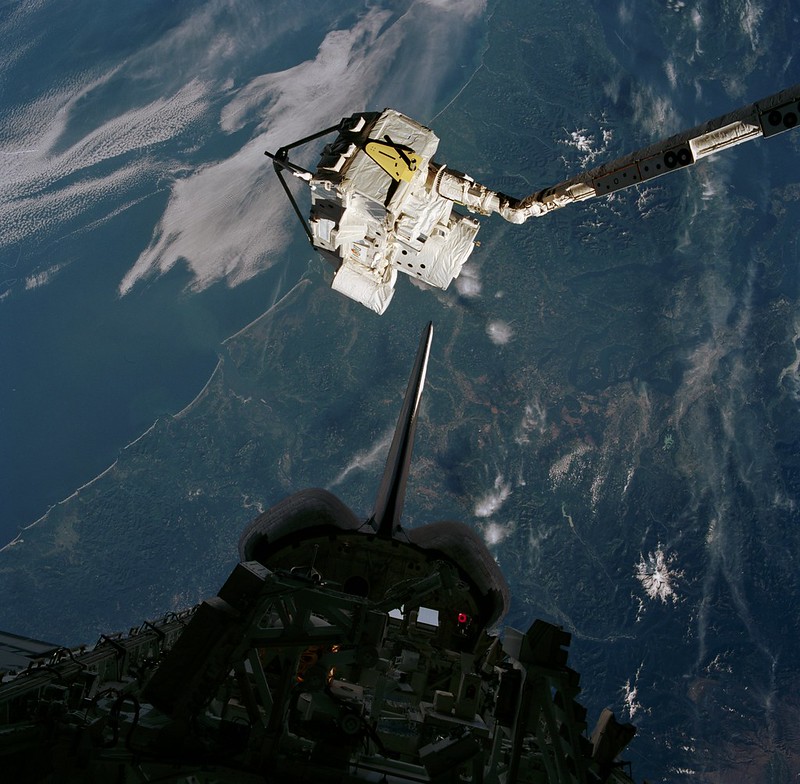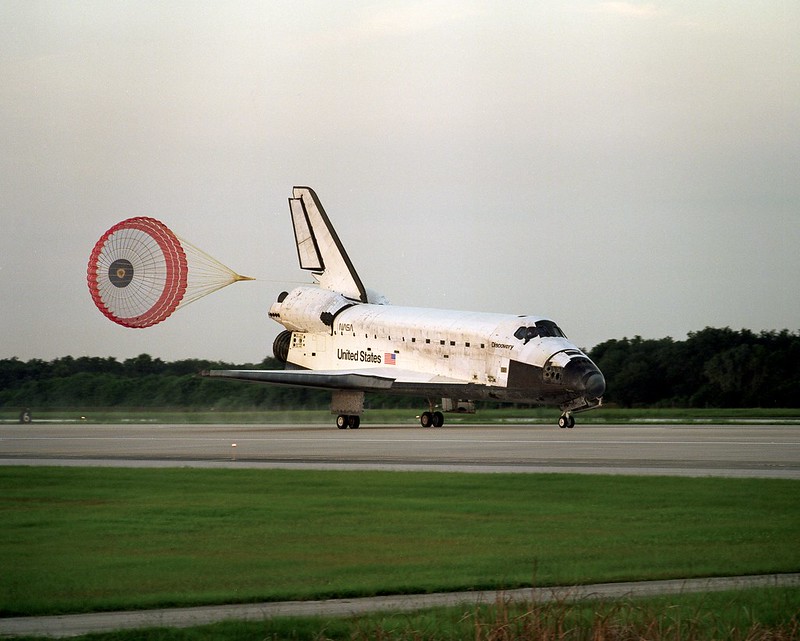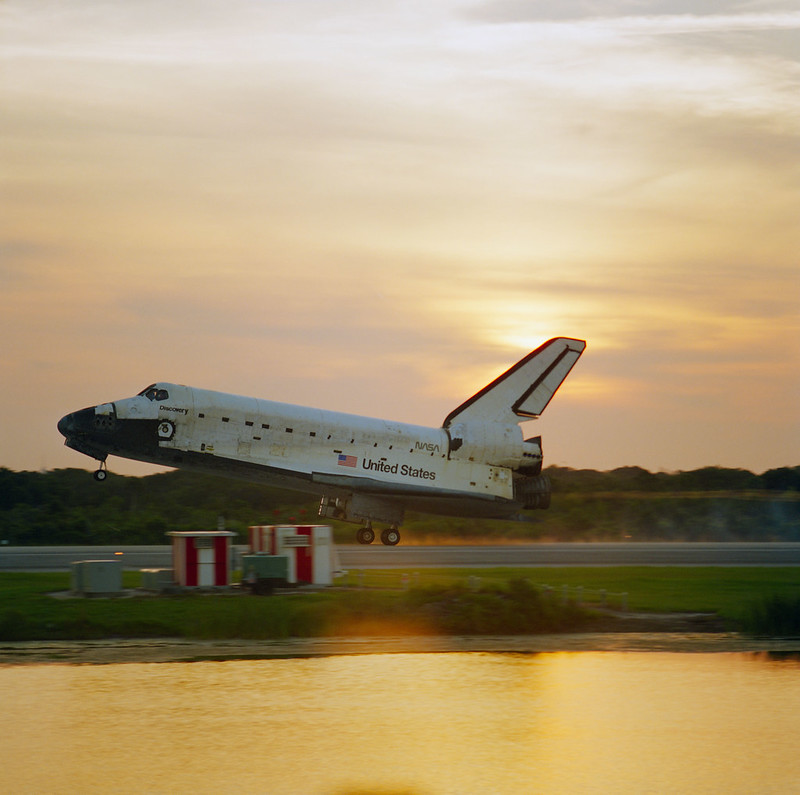STS-85 Fact Sheet
By Cliff Lethbridge

STS-85 — Discovery
86th Space Shuttle Mission
23rd Flight of Discovery
Crew:
Curtis L. Brown, Jr., Commander
Kent V. Rominger, Pilot
Jan Davis, Payload Commander
Robert L. Curbeam, Jr., Mission Specialist
Stephen K. Robinson, Mission Specialist
Bjarni V. Tryggvason, Payload Specialist
Orbiter Preparations:
Tow to Orbiter Processing Facility – February 21, 1997
Rollover to Vehicle Assembly Building – July 7, 1997
Rollout to Launch Pad 39A – July 14, 1997
Launch:
August 7, 1997 – 10:41:00 a.m. EDT. Launch occurred as scheduled with no delays.
Landing:
August 19, 1997 – 7:07:59 a.m. EDT at Runway 33, Kennedy Space Center. Rollout distance was 8,792 feet. Rollout time was 68 seconds. Mission duration was 11 days, 20 hours, 26 minutes, 59 seconds. Landing occurred during the 190th orbit. Landing was originally scheduled for August 18, 1997 but was postponed one day due to ground fog.
Mission Summary:
In a mission dedicated to Earth observation as well as testing of International Space Station construction techniques, the main payload was the Cryogenic Infrared Spectrometers and Telescopes for the Atmosphere-Shuttle Pallet Satellite-2 (CRISTA-SPAS-2).
Other major payloads included the Japanese Manipulator Flight Development (MFD), Technology Applications and Science-01 (TAS-01) and the International Extreme Ultraviolet Hitchhiker-02 (IEH-02).
CRISTA-SPAS-2 represented a joint venture between the German Space Agency and NASA. The small free-flying satellite contained three telescopes and four spectrometers. The spacecraft was deployed during the first day of the mission, and completed about 200 hours of free-flight prior to being retrieved on August 16, 1997.
The spacecraft collected valuable data on Earth’s middle atmosphere. The three telescopes collected 38 full atmospheric profiles of the middle atmosphere. A total of 22 sounding rockets and 40 weather balloons were launched to provide correlating data.
A complementary experiment deployed aboard CRISTA-SPAS-2 called the Middle Atmosphere High Resolution Spectrograph Investigation (MAHRSI) also performed well during the mission.
After its scientific activities were completed, CRISTA-SPAS-2 was used in an exercise to simulate construction of the International Space Station. The crew practiced manipulating the spacecraft as if it were the Functional Cargo Block (FGB) that will be attached to Node-1, the first U.S. element of the International Space Station.
TAS-1 was a Hitchhiker payload carrying eight experiments intended to demonstrate faster, improved and cheaper processes in the field of avionics. Experiments included the Solar Constant Experiment (SOLCON), Infrared Spectral Imaging Radiometer (ISIR) and Shuttle Laser Altimeter (SLA).
Remaining TAS-1 experiments included the Critical Viscosity of Xenon (CVX), Space Experiment Module (SEM), Two Phase Flow (TPF), Cryogenic Flight Experiment (CFE) and Stand Alone Acceleration Measurement Device and the Wide Band Stand Alone Acceleration Measurement Device (SAAMD/WBSAAMD).
MFD was designed to evaluate the use of the Small Fine Arm, intended to be a part of the Japanese Experiment Module Remote Manipulator System of the International Space Station. The unit performed well with just a few minor glitches.
Two unrelated Japanese experiments, the Two Phase Fluid Loop Experiment (TPFLEX) and Evaluation of Space Environment and Effects on Materials (ESEM) were mounted near the Small Fine Arm in the payload bay.
IEH-02 consisted of four experiments, including the Solar Extreme Ultraviolet Hitchhiker-2 (SEH-2), Ultraviolet Spectrography Telescope for Astronomical Research (UVSTAR) and Distribution and Automation Technology Advancement Colorado Hitchhiker and Student Experiment of Solar Radiation (DATA-CHASER).
Also included in IEH-02 were Shuttle Glow Experiment-5 and Shuttle Glow Experiment-6. All of the IEH-2 elements had the common objective of investigating solar extreme ultraviolet (EUV) flux and EUV emissions of the Jupiter Io plasma torus system.
Experiments flown in the crew cabin included the Bioreactor Demonstration System-3 (BDS-3), which was used to grow colon cancer cells to a larger size than is possible on Earth. Other experiments included the Protein Crystal Growth Locker Thermal Enclosure System (PCG-STES).
Remaining experiments in the crew cabin were the Midcourse Space Experiment (MSX), Shuttle Ionospheric Modification with Pulsed Local Exhaust (SIMPLEX) and Southwest Ultraviolet Imaging System (SWUIS), which was used to examine the Hale-Bopp comet.
Two Get Away Special (GAS) payloads were also flown in the crew cabin. These included the Biological Research in Canisters-10 (BRIC-10) and the Solid Surface Combustion Experiment (SSCE).
The crew also worked with the Orbiter Space Vision System (OSVS) which will be used during assembly of the International Space Station. OSVS features a series of dots placed strategically on various payload and vehicle structures that permit precision alignment and pointing.
SELECTED NASA PHOTOS FROM STS-85
